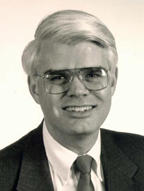|
Links
NCSA Mosaic
Home Page
IDC
Lotus
Microsoft
Netscape
A.C.L.U.
v. Reno
Microsoft
Fortune
Netscape
Wells Fargo
E*Trade
Wal-Mart
Beneficial
Nat'l Bank On-line Loans
Quicken
InsureMarket
|
Introduction
Introduction Commercial
Use of Net
|
"Elizabeth, tell Gramma what the Internet is."
"Its all the computers in the world, connected together,
Gramma. You can use it to talk with people everywhere." -- Elizabeth,
age nine years
|
The Internet has been used for decades to share
once-scarce computer power. Its "user-friendly" form, the World
Wide Web, is a relative newborn. Conceived in Europe, the Web was made
simple to use by Mosaic
software developed at the National
Center for Supercomputing Applications at The University of Illinois at
Urbana/Champaign. Now, hundreds of software programs use advanced Web
software to enable us to swiftly and easily connect with all the information
and all the processing power on all the computers in the world. According
to a Global Market Forecast for Internet
Commerce released in January, 1996 by International Data Corporation
(IDC), the amount of information and the number of users on the Web are
increasing exponentially, especially in North America.
Initially a hobbyist's toy, the personal computer,
or PC, became an important business tool because of a spreadsheet program,
VisiCalc, and its successors Lotus 1-2-3
and Microsoft Excel. Word processing
programs made the PC valuable for scriveners. Networks allowed email and
file sharing among those with similar equipment and software. People increased
connectivity by creating Wide Area Networks, and communicated within larger
but still separate enterprises. Still, the global variety of hardware and
software made it hard for the various users' machines to "talk."
Suddenly, Web software from companies like Netscape
made communication between all the computers in the world child's play.
Growth of the Web exploded: as of June, 1996
"reasonable estimates are that as many
as 40 million people around the world can and do access the enormously
flexible communication Internet medium. That figure is expected to grow
to 200 million Internet users by the year 1999."
A.C.L.U.
v. Reno, 1996 E.D.Pa. 636 (June 11, 1996: Philadelphia) Findings
of Fact #3.
The Web is also fundamentally different from other
media of communication:
"Unlike traditional media, the barriers
to entry as a speaker on the Internet do not differ significantly from
the barriers to entry as a listener. Once one has entered cyberspace, one
may engage in the dialogue that occurs there. In the argot of the medium,
the receiver can and does become the content provider, and viceversa.
* * * The Internet is therefore a unique and wholly new medium of worldwide
human communication."
A.C.L.U.
v. Reno, supra, Findings of Fact #80 and #81.
Commercial
Use of the Internet
Using the Internet for commercial transactions
was prohibited when it was a government-funded resource for scientists
and academics. The 90's saw billions of dollars invested by for-profit
companies providing the communications infrastructure for high-volume Internet
use by business, industry and consumers.
In 1995, in an internal memo to Microsoft
management, Bill Gates said that the Internet was the most important
thing to happen since the invention of the PC, and that developing tools
for it was thereafter Microsoft's number one business priority. Microsoft
has announced that it will incorporate Web browser capability into its
next software upgrades, including its business-oriented Office software
and server technology, and its new wireless hand-held operating system.
Net product vendors report that the biggest purchases
of Net technology are by large businesses that are installing "intranets,"
private Nets within their companies, to enable faster, better communication
and sharing of information and experience among their employees and business
partners. See "The
Internet Inside Your Company," Fortune November 27, 1995; Business
Research Group "Web Servers and the Rise of the Corporate Intranet,"
1995. See also Andreessen, et al., The
Netscape Intranet Vision and Product Roadmap (July, 1996).
Other vendors are developing breakthrough means
to facilitate electronic commerce, by which Net technology is used to exchange
and process orders, invoices, payment and account reconciliation between
vendors and purchasers. Traditionally, such transactions were conducted
over private, leased "switched line" networks costing more to
set up and to use than the "open space" of the Internet.
Widespread use of the open Net for commercial
transactions, other than for advertising, awaits public acceptance of the
security tools that protect users from fraud and theft of private information
and from interception of confidential communication. Already, banks,
stock brokerages and global
retailers offer consumers transactions over the Net. You can move money,
buy stocks or order socks over the Net, using your preferred brand of computer,
web browser and internet service provider.
You can get a loan
and buy auto, home and life insurance
the same way.
Introduction Commercial
Use of Net
This document was
first online at lynxcom.com
|

